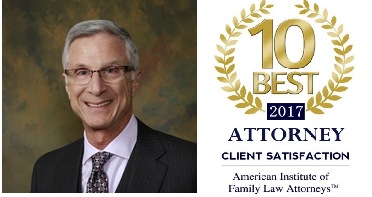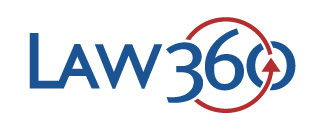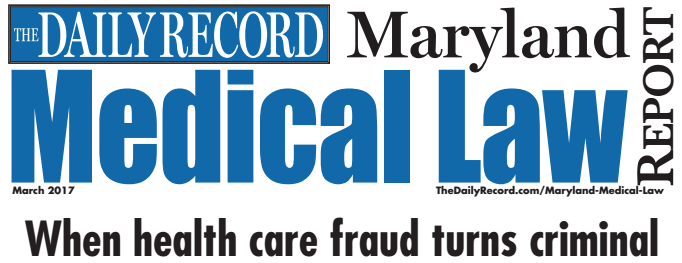INSTRUMENTAL DELIVERIES
An Important Discussion About Vacuum Deliveries All Effected Families Should Read
“It has been repeatedly shown that under modern conditions, caesarian section, although not devoid of risk, offers better results to both mother and child than does a difficult instrumental delivery.”[1]
On May 21, 1998, the FDA issued a public health advisory entitled, “Need For Caution When Using Vacuum Assisted Delivery Devices.”[2] The Advisory stated that:
Vacuum assisted delivery devices may cause serious or fatal complications . . .
The Advisory went on to say that:
While no instrumental delivery is risk free, we are concerned that some health care professionals who use vacuum assisted delivery devices, or those who care for these infants following delivery, may not be aware that the device may produce life-threatening complications.
The FDA noted that it had received over the past four years reports of twelve (12) deaths and nine (9) serious injuries among newborns on whom vacuum assisted delivery devices were used. The types of complications that the FDA discussed were subgaleal hematomas[3] and intracranial hemorrhages.
In Childbirth FDA Patient Safety News, June 2002, Problems After Vacuum -Assisted Childbirth, it is noted:
But the FDA has received reports of much more serious complications, including subgaleal hematoma and intracranial hemorrhage. And although these are rare, they can be fatal.[4]
Subgaleal hematoma (injury to the scalp with subsequent bleeding into the potential space between the galea aponeurotica and the pericranium[5]) may be life threatening because “damage to the emissary veins may cause bleeding and result in a large proportion of the baby’s blood volume accumulating in this space.”[6] The relationship between subgaleal hematomas and vacuum extractors had been published in the medical literature before the FDA warning of 1998, evidenced in a 1995 article in The Journal of Family Practice which states, “The major reported risk factor for subgaleal hematoma is use of a vacuum extractor to assist with the delivery of the infant.”[7]
The Committee felt that the decrease in the use of the vacuum device resulting from the Advisory might result in a higher cesarean section delivery rate or the increased use of forceps by some who have not had adequate training.
The FDA has recommended that in cases where vacuums were used, the caregivers of the newborn are to be instructed to watch for several days for possible problems as set forth above, and recommend that the fact that a vacuum was used be clearly listed in the patient’s chart.[8]
TECHNICAL BULLETINS
In February 1991, ACOG issued a Technical Bulletin[9] dealing with operative vaginal delivery. Under the heading of “Clinical Management” the Bulletin stated:
The indications, preparation of the patient, definitions, and prerequisites for vacuum extraction delivery are the same as for forceps deliveries.
Additionally, the ACOG Bulletin stated:
Relative contraindications for vacuum extraction include prematurity, suspected macrosomia, suspected fetal coagulation defect, fetal scalp blood sampling, and a non-vertex presentation.
Noting at that time the literature for the safety of the soft cup vacuum was sparse, the following criteria were suggested:
Descent of the fetal head must occur with each push-pull effort and delivery should be completed or almost completed in three pulls. The fetal head should be completely delivered within fifteen minutes after the cup is first applied.
The Bulletin ends with:
As with forceps procedures, there must be a willingness to abandon attempts at vacuum extraction if progress does not proceed easily.
This Technical Bulletin[10] was superceded by another one issued in August 1994[11], which reaffirmed that:
. .indications, preparation of the patient, definitions, and pre-requisites for vacuum extraction are essentially the same as for forceps delivery.
One significant change in the Technical Bulletin appears on page four:
There is a lack of consensus regarding the number of pulls required to effect delivery, the maximum number of cup detachments that can be tolerated, and the total duration of the procedure. These issues have not been subjected to rigorous scientific study and should be based on the judgment of the operator or supervisor and clinical circumstances. As a general guideline, progress in descent should accompany each traction attempt.
Again, ACOG stated:
As with forceps procedures, there should be a willingness to abandon attempts at vacuum extraction if satisfactory progress is not made.[12]
Since the indications for vacuum extraction are essentially the same as for forceps delivery, the cervix should be completely dilated, the membranes should be ruptured, and the fetal head should be engaged. With regard to the determination of station, significant caput formation can lead an obstetrician to misjudge where the bony part of the head actually is located.[13] The contraindications,[14] therefore, include:
- CPD (Cephalo-Pelvic Disproportion)
- Face or brow presentation
- Breech presentation
- Unengaged fetal head
- Premature infant
- Incompletely dilated cervix
Dr. Robert H. Hayashi, in his chapter on ventouse delivery, notes that:
Caution should be used if a vacuum extractor is used on a fetus who has had fetal scalp blood samplings performed earlier in labor, since there has been one report of an exsanguination of an infant when ventouse delivery followed fetal blood sampling.[15]
ACOG Practice Bulletin Number 17, entitled “Operative Vaginal Delivery” and dated June 2000 indicates “the incidence of intracranial hemorrhage is highest among infants delivered by caesarian following a failed vacuum or forceps delivery.” They go on to say, “… an operative vaginal delivery should not be attempted when the probability of success is very low. Persistent efforts to obtain a vaginal delivery using different instruments may increase the potential for maternal and fetal injury and often indicates cephalo pelvic disproportion.” ACOG indicates, “most authorities consider vacuum extraction inappropriate in pregnancies before 34 weeks of gestation because of the risk of fetal intraventricular hemorrhage. Vacuums may also be responsible for retinal hemorrhages and hyperbillirubinemia.”[16]
Dow Corning lists in its literature that the indications for the use of its SILASTIC® Obstetrical Vacuum Cup are made much the same as the forceps operations.
- Appropriate presentation and attitude. It may be safer not to use the cup in brow or face presentations.
- No demonstrable clinical cephalopelvic disproportion.
- Adequate dilatation and effacement of the cervix.
- Ruptured membrane.
- Engagement of the head.
Dow specifically states under contraindications:
- Deliveries requiring unusual amounts of traction
- There must be no disproportion between the parturient canal and the presenting fetal part
- The SILASTIC® Obstetrical Vacuum Cup must never be applied to overcome an absolute mechanical obstacle
The manufacturer also advises, “Always pull in synchronization with the contractions- this is one of the most important principles and rules in the application of the vacuum cup.”[17]
The operational guidelines for the use of the MITYVAC® list as contraindications for the use of the vacuum an unengaged presenting part, a breech face/brow presentation or transverse lie, and cephalopelvic disproportion.[18]
In the Operational Guidelines for use of The Mityvac Obstetrical Vacuum Extraction System, published in March, 1997, the manufacturer warns:
CAUTION
INCORRECT USE OF THIS DEVICE COULD POSSIBLY CAUSE:
MATERNAL SOFT TISSUE INJURIES: VAGINAL, CERVICEAL [sic], UTERINE, BLADDER AND RECTUM. FETAL BRUISES, CONTUSIONS, LACERATIONS, FRACTURES, INTRACRANIAL HEMORRHAGE, CEPHALHEMATOMA, SUBDURAL HEMATOMA, SUBGALEAL HEMATOMA, PARENCHYMAL HEMATOMA AND RETINAL HEMORRHAGE.[19]
In Shoulder Dystocia and Birth Injury, Prevention and Treatment,[20] Dr. James O’Leary warns that “both the perturbations of difficult high or mid-forceps delivery or a vacuum extraction of a head wedged within an inadequate tight, bony birth canal, present grave danger of fetal, skull and brain injury. . .”
As a general proposition, the use of vacuum extractors has been directly linked with cranial trauma, including skull fractures.[21] Trauma, in turn, is a causative agent in cerebral venous thrombosis.[22] Also, by way of example, venous sinus thrombosis has been associated with cranial trauma and instrumental delivery.[23]
Moreover, the body of medical literature contains several studies and articles indicating that vacuum extractors can cause dangerous and life threatening effects as a result of the pressure applied to the area of the venous sinuses. To cite only a few examples, Dr. Aldo Vacca’s paper entitled “Birth by Vacuum Extraction: Neonatal Outcome,”[24] indicates that use of vacuum extractors has caused the incidence of subgaleal hemorrhage to increase “considerably.” Dr. Vacca writes:
Intracranial hemorrhage should always be considered in the differential diagnosis if the baby exhibits abnormal neonatal behavior after difficult vacuum extraction so that early diagnosis may lead promptly to more effective treatment.[25]
Dr. Vacca has also published a comprehensive work concerning use of the vacuum extractor entitled, Handbook of Vacuum Extraction in Obstetric Practice (1992). In the section entitled “Effects of Vacuum Extraction on the Infant,” Dr. Vacca warns:
[D]amage to the falx or tentorium and to their venous sinuses may occur when compression on the head is excessive as may happen when vacuum extraction is attempted in the presence of severe molding.
Vacuum extraction is also correlated with tentorial hemorrhage and mental retardation by the physicians in “Tentorial Hemorrhage Associated with Vacuum Extraction.”[26]
Vacuum extraction has also been associated with the development of dural tears. The application of the vacuum cup to the vertex with longitudinal traction exerts vertical stresses on the tentorium with tearing and hemorrhage similar to that seen with forceps delivery.[27]
While the incidence of intracerebral hemorrhage with vacuum extraction is small, it is increased in situations involving pre-term delivery, and therefore, “…pre-term delivery is a relative contraindication for the use of the vacuum extractor.”[28]
The prenatal record usually has a place on it for the obstetrician to note whether or not the mother’s pelvis is adequate for a normal vaginal delivery. As there are various different types of pelvises, it would also be important for the doctor to note what type of pelvis the mother has.
Where nurse-midwives are allowed to use vacuum extractors to deliver babies, it is usually done by an agreement with the delivering obstetrician for whom they are employed. This is subject to various state regulations requiring a definition of the circumstances and manner in which the vacuum can be used. In Maryland, for example, COMAR 10.27.05.06 provides that:
A. A certified nurse midwife who meets the requirements of Regulation .02 of this chapter may perform the following functions:
(1) Independent management of clients appropriate to the skill and knowledge of the certified nurse midwife and the nurse midwife’s agreement and protocols;…
Hospitals usually have protocols dealing with vacuum extraction. These discuss various issues, including under what conditions vacuum use should be terminated. The American College of Nurse-Midwives has published a book on vacuum-assisted birth, in which they discuss, in the sample protocols, what the operative role of the nurse-midwife is in the use of the vacuum extractor, i.e., how the vacuum is to be applied, what steps are to be taken before applying the vacuum, how it is determined where on the fetal head the vacuum is placed and how the vacuum is then used. Also addressed are the functions of others in the delivery room during the attempted vacuum extraction?[29]
Usually a nurse in the delivery room will be responsible for making sure the pressure on the vacuum is appropriate for the use of the instrument. Questions dealing with how this was determined and how it was maintained are essential. Nursing issues may also deal with a failure to use the chain of command when inappropriate actions are instituted by the deliverer.
It is important to understand not only how many times the vacuum has popped-off, but why that has occurred. Some protocols provide that after two to three pop-offs, vacuum use should be discontinued.[30] They may also be informative as to how long the vacuum should be used. See also Operational Guidelines for Use of the MITYVAC® Obstetrical Vacuum Extraction System, March 1997, which states:
DISCONTINUE VACUUM EXTRACTION IF ANY OF THE FOLLOWING EXIST
1. Cumulative traction time exceeds 10 minutes.
2. Extractor cup becomes disengaged three times.[31]
While ACOG does not specifically list in any of the technical bulletins or practice bulletins the amount of pop-offs before the vacuum should be discontinued, a review of the ACOG publication Prolog Obstetrics provides information in this regard.[32] Instructive of this is the following:
The American College of Obstetricians and Gynecologists recommends that the time of vacuum application be limited, but does not specify what this limit should be. The University of Mississippi protocol recommends limiting suction pressure, restricting vacuum application to twenty minutes or less and abandoning the procedure after three pop-offs of the applicator.
Prolog goes on to state that:
Those such recommendations are level C evidence (recommendations of respected expert). They highlight the importance the limiting the suction and duration of application with vacuum. In many cases, when signs predicting failure of vacuum-assisted delivery are present, it is appropriate to proceed with the cesarean delivery or to change the position of the vacuum or to change to forceps.
There are only so many reasons why a vacuum will pop-off. These would include, among other things, inappropriate placement of the vacuum.
There is also a noted relationship between the use of a vacuum extractor and shoulder dystocia. The authors in “Shoulder Dystocia and Operative Vaginal Delivery” point out, “… This is not the first study to suggest that the use of the vacuum extractor is more likely to cause shoulder dystocia.”[33] See also Gosk J, Rutowski R., “Analysis of Risk Factors for Perinatal Brachial Plexus Palsy” (article in Polish). ACOG recognizes with regard to shoulder dystocia “associated intrapartum factors include labor induction, epidural anesthesia, and operative vaginal delivery (forceps and vacuum-assisted delivery).” [34]
AFTER THE DELIVERY
It is important to carefully review the newborn records to determine whether or not any abnormal signs were present. These may include bogginess of the scalp, increased size of the head, pallor and other indications of a baby that was not neurologically intact. If caught at an appropriate time, an expanding subgaleal hemorrhage can be appropriately treated. If left unattended, it will lead to the baby’s demise.
CONCLUSION
During delivery, it is important to recognize whether it was appropriate to use the vacuum, whether the vacuum was used appropriately with respect to placement, number of pulls, pop-offs and time. Also important to discover is whether newborn caregivers were aware of the potential problems from its use. Always remember the ACOG admonition: “as with forceps procedures, there should be a willingness to abandon attempts at vacuum extraction if satisfactory progress is not made.”[35]
[1] Jones E. Parry, Kielland’s Forceps. Butterworth and Co., LTD, Illiard, Temple Barr, 1952
[2] FDA Public Health Advisory: Need For CAUTION When Using Vacuum Assisted Delivery Devices, May 21, 1998.
[3] See, P. Govaert, P. VanHaesebrouck, et al., Vacuum Extraction, Bone Injury and Neonatal Subgaleal Bleeding, 151 Eur J. Pediatr. 532-535. (1992).
[4] FDA Patient Safety News, Problems after Vacuum-Assisted Childbirth, 5, June 2002
[5] Sue Ann Smith, M.D., et al., Subgaleal Hematoma: The Need for Increased Awareness of Risk, 41 The Journal of Family Practice, 569-574 (1995).
[6] Aldo Vacca, Handbook of Vacuum Delivery in Obstetric Practice, 114, (2003).
[7] Sue Ann Smith, M.D., supra at 569.
[8] FDA Patient Safety News, Problems after Vacuum-Assisted Childbirth, 5, (June 2002).
[9] ACOG Technical Bulletin Number 152, (November 1991).
[11] ACOG Technical Bulletin Number 196, Operative Vaginal Delivery (August 1994).
[13] ACOG Technical Bulletin Number 196, page 2.
[14] Resnick Creasy, et al., Maternal Fetal Medicine, (4th Ed., 1999).
[15] D.K. James, High Risk Pregnancy Management Options, 1147, (1994).
[16] ACOG Practice Bulletin Number 17, Operative Vaginal Delivery
[17] Dow Corning Silastic Brand Obstetrical Vacuum Cup package insert, March 1989.
[18] Operational Guidelines for Use of the MITYVAC® Obstetrical Vacuum Extraction System, March 1997.
[20] James A. O’Leary, M.D., Shoulder Dystocia and Birth Injury, Prevention and Treatment (1992).
[21] See Hickey and McKenna, Skull Fracture Caused By Vacuum Extraction, 88 Obstetrics & Gynecology, (October 1996).
[22] See Berg, Neurologic Aspects of Pediatrics, 333-34 (1992); Pellock & Myer, Neurologic Emergencies in Infancy and Childhood, 377 (1993).
[23] See Hanigan, et. al., Neonatal Cerebral Venous Thrombosis, 14 Pediatric Neuroscience, 177 (1998).
[24] Aldo Vacca, M.D., Birth by Vacuum Extraction: Neonatal Outcome, 32 Journal of Pediatrics, Child Health, 204 (1996).
[25] Aldo Vacca, M.D., Handbook of Vacuum Extraction in Obstetric Practice, 72, (1992).
[26] Tentorial Hemorrhage Associated with Vacuum Extraction, 85 Pediatrics 534 (April 1990). See also Swaiman & Ashwal, Pediatric Neurology, 2, 1174 which states “Risk factors are age related. Dehydration is especially common in neonates as well as birth trauma including vacuum extraction.”
[27] Malcolm I. Levene, et al., Fetal and Neonatal Neurology and Neurosurgery, (1995).
[28] Robert K. Creasy, Management of Labor and Delivery, (1997).
[29] American College of Nurse=Midwives, Vacuum Assisted Birth in Midwifery Practice, 51,52, (2002). See also P. Annie Clark, CNM,MPH, Use of the vacuum Extractor by Midwives- What Has Changed in the Last Decade?, 50 Journal of Midwifery & Women’s Health, 517, (2005).
[30] American College of Nurse-Midwives, Vacuum Assisted Birth in Midwifery Practice, 51,52, (2002).
[31] Operational Guidelines for Use of the MITYVAC® Obstetrical Vacuum Extraction System, March 1997.
[32] American College of Obstetricians and Gynecologists, Prolog Obstetrics, § 64 (5th ed., 2003).
[33] James A. Boffill, M.D., et al, Shoulder Dystocia and Operative Vaginal Delivery, 6 Journal of Maternal-Fetal Medicine, 220-224. 1997
[34] ACOG Practice Bulletin Number 40, November 2002.
[35] ACOG Technical Bulletin Number 152, November 1991.
Andrew E. Greenwald is a founding shareholder of Joseph, Greenwald, & Laake, P.A., in Greenbelt and Rockville, MD. He is a former co-chair of AAJ’s Medical Negligence Information Exchange Group, and is the former co-chair of AAJ’s Birth Trauma Litigation Group. He is listed in Best Lawyers in America, Maryland and DC Super Lawyers and LawDragan’s 500 Leading Plaintiff’s Lawyers.
©2017 Andrew E. Greenwald, Esq.







